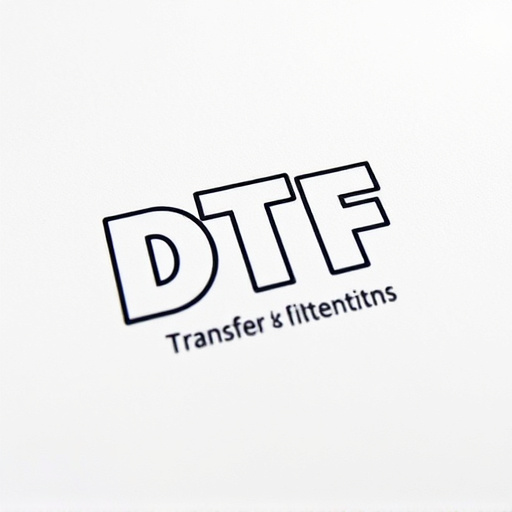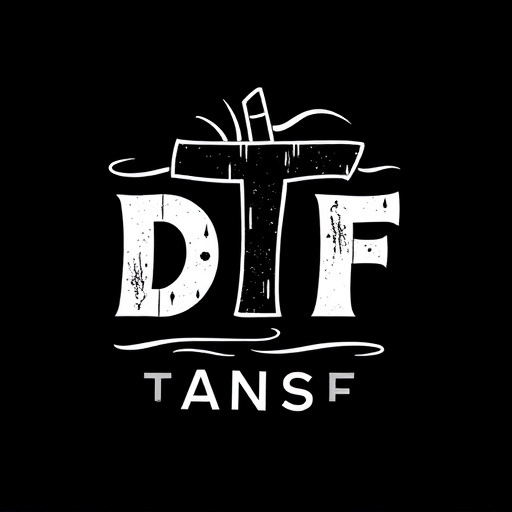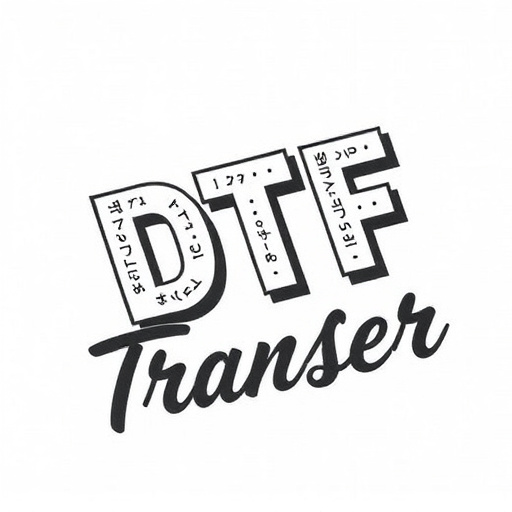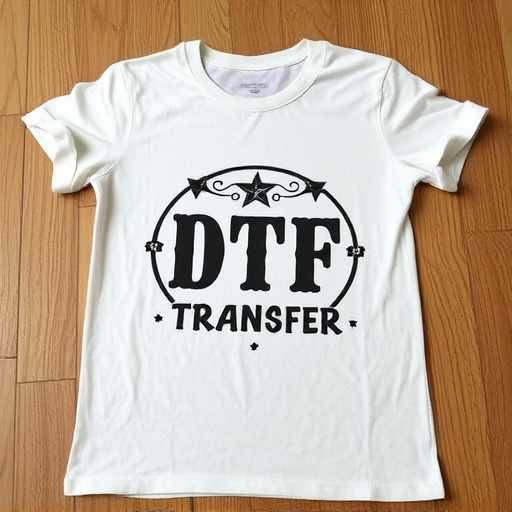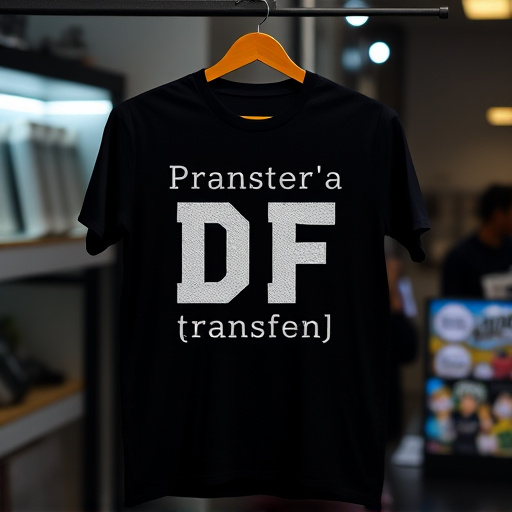Direct-to-Film (DTF) printing is a cutting-edge method offering vibrant, high-quality prints on diverse surfaces without intermediate materials. The process involves applying ink directly to film or specific substrates, ensuring precise detail reproduction. Choosing the right fabric, such as cotton or polyester, and preparing the surface properly are crucial for optimal DTF transfers. Various materials like vinyl, heat-transfer paper, cotton, and poly-cotton blends have unique properties, each suitable for different applications. Advanced inks and precise print settings further enhance the quality of DTF prints. DTF technology has transformed multiple industries, including textiles, automotive, signage, and displays, providing cost-effective, versatile printing solutions.
Direct-to-film (DTF) printing has revolutionized various industries by enabling high-quality prints on a range of materials. This article delves into the optimal fabrics and surfaces for DTF application, offering a comprehensive guide. We’ll explore key factors in choosing the best fabrics for DTF printing, emphasize the importance of surface preparation, review popular DTF materials with their pros and cons, discuss advanced techniques to enhance print quality, and highlight real-world use cases across diverse sectors, all centered around the innovative DTF transfer technology.
- Understanding Direct-to-Film (DTF) Transfer: A Brief Overview
- Key Factors in Choosing Optimal Fabrics for DTF Printing
- Surface Preparation: Ensuring Smoothness and Adhesion for DTF Transfers
- Popular Materials for DTF Applications: Pros and Cons
- Advanced Techniques to Enhance DTF Print Quality
- Real-World Use Cases: Industries Benefiting from DTF Technology
Understanding Direct-to-Film (DTF) Transfer: A Brief Overview
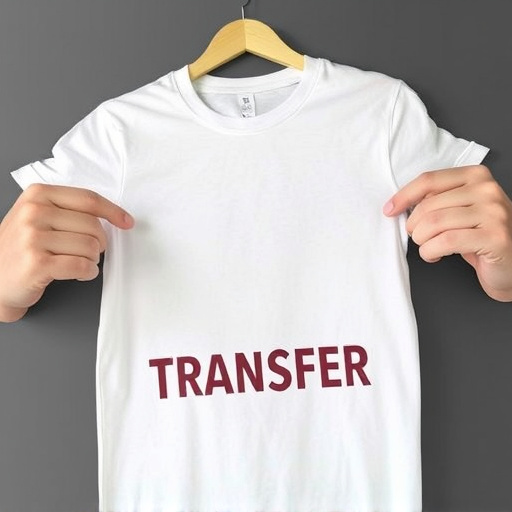
Direct-to-Film (DTF) transfer is a cutting-edge printing method that has revolutionized the way we produce high-quality, vibrant prints on various surfaces. Unlike traditional printing techniques that rely on intermediate materials, DTF involves applying ink directly onto film or specific substrates, enabling precise and detailed reproduction of designs. This process is particularly popular in industries like signage, packaging, and even fashion, due to its ability to create bold, durable DTF prints.
The beauty of DTF lies in its versatility; it can be used on a diverse range of fabrics and materials, from smooth plastics to textured fabrics. This makes it an attractive option for businesses looking to create unique, custom designs with intricate details. With the right choice of fabric and surface preparation, DTF printing ensures that final outputs are not only visually appealing but also long-lasting, making it a preferred method for both indoor and outdoor applications.
Key Factors in Choosing Optimal Fabrics for DTF Printing

When selecting fabrics for direct-to-film (DTF) printing, several key factors come into play. The primary consideration is the compatibility of the fabric with the DTF transfer process. Not all materials are suitable for this technique; those with smooth, flat surfaces and even porosity levels are ideal. Natural fibers like cotton and linen, as well as synthetic fabrics such as polyester and nylon, are commonly used in DTF printing due to their ability to accept inks effectively. The texture and composition of the fabric play a crucial role in achieving high-quality DTF prints.
Additionally, the intended use of the final product is vital. For example, if the DTF transfer is for clothing, fabrics like T-shirts, hoodies, or caps offer a great balance between breathability and durability. On the other hand, for signage or decorative items, stiffer materials may be preferred to ensure the DTF prints remain crisp and dimensional. Understanding the desired outcome will help guide the selection of the most suitable fabric, ultimately enhancing the quality and longevity of the printed designs.
Surface Preparation: Ensuring Smoothness and Adhesion for DTF Transfers

Surface preparation is a critical step in achieving high-quality DTF (Direct-to-Film) transfers and prints. The smoothness and adhesion of the substrate play a significant role in the final outcome, ensuring crisp and long-lasting DTF applications. Before applying any DTF material, it’s essential to clean and prepare the surface thoroughly. This involves removing any dust, grease, or contaminants that might hinder adhesion. A smooth, clean surface allows for even distribution of the DTF film, resulting in precise prints without bubbles or imperfections.
For optimal results, consider using materials with a uniform texture suitable for DTF printing. Smooth surfaces like polycarbonate or acrylic sheets provide excellent adhesion, whereas rougher textures may require additional priming or coating to enhance stickiness. Proper surface preparation techniques, such as sanding or using specialized cleaners, can create the ideal conditions for successful DTF transfers, guaranteeing vibrant and accurate DTF prints every time.
Popular Materials for DTF Applications: Pros and Cons

In the realm of direct-to-film (DTF) applications, several popular materials have emerged as game-changers in the printing industry. These include a range of fabrics and surfaces that offer unique advantages for creating high-quality DTF prints. One widely used material is vinyl, known for its versatility and durability. Vinyl DTF transfers are popular due to their ability to produce vibrant, long-lasting colors and their resistance to fading and cracking. However, it can be challenging to work with, requiring precise application techniques to avoid bubbles or wrinkles.
Another favored option is heat-transfer paper, which offers excellent image quality and a smooth finish. This material is particularly suitable for light-colored fabrics as it ensures the design is well-defined. Yet, it may not withstand extreme conditions like direct exposure to sunlight over extended periods. Cotton and poly-cotton blends are also popular choices for DTF printing, offering breathability and comfort. These natural fibers result in soft, durable prints but can be more prone to fading compared to synthetic options. Understanding the pros and cons of these materials is crucial when selecting the optimal fabric or surface for specific DTF application needs.
Advanced Techniques to Enhance DTF Print Quality

In the realm of direct-to-film (DTF) printing, advanced techniques have emerged to elevate the quality of DTF transfers and prints. One such technique involves the use of specialized inks designed for optimal adhesion and vibrancy on various surfaces. These inks are formulated to withstand the rigors of the printing process, ensuring that the final DTF prints remain crisp and durable.
Additionally, precise control over print settings, including temperature, pressure, and drying time, plays a pivotal role in achieving superior DTF results. Modern printers often incorporate smart features that automatically calibrate these parameters based on the material and design, streamlining the printing process. This precision engineering guarantees that every detail of the digital design is accurately transferred onto the film, ultimately producing high-quality DTF prints that cater to diverse applications.
Real-World Use Cases: Industries Benefiting from DTF Technology

Direct-to-film (DTF) technology has revolutionized various industries by offering efficient and versatile printing solutions. One of the standout use cases is in the textile industry, where DTF Transfer methods allow for the creation of custom designs on a wide range of fabrics. From clothing lines to home decor items, this technique enables small businesses and designers to bring their unique artistic visions to life quickly and cost-effectively.
Additionally, the automotive sector has embraced DTF Printing for producing high-quality wraps and graphics on vehicles. These prints can transform cars into mobile advertising platforms or offer personalized designs, enhancing aesthetics and individual expression. Furthermore, DTF Technology finds application in signage and display materials, ensuring vibrant and long-lasting visuals for indoor and outdoor environments, from shop fronts to exhibition stands.






